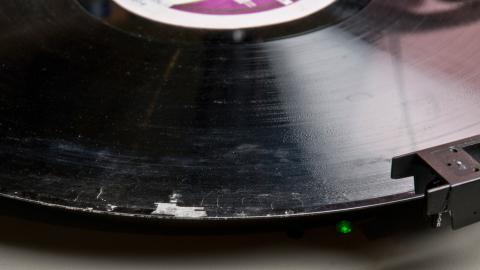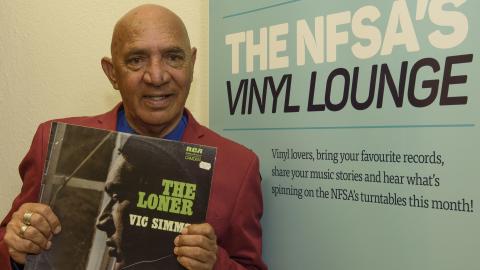
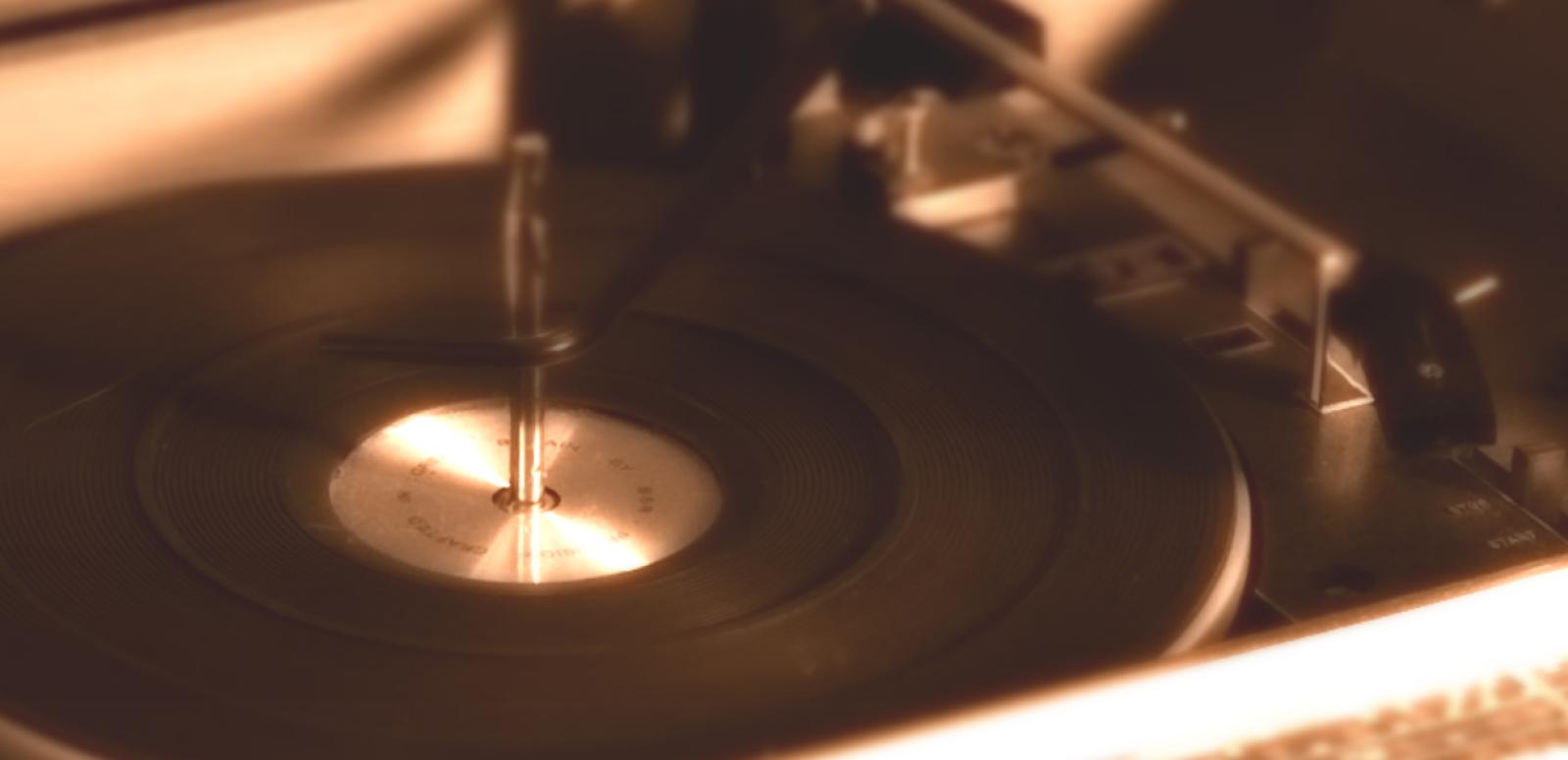
Vinyl renaissance
Vinyl renaissance
Assistant Sound Curator Nick Henderson speaks with Zenith Records Director Paul Rigby about the current state of the vinyl market in Australia. You can read more about the NFSA and the current vinyl revival in Collecting Australia’s 21st century vinyl.
Nick Henderson: When was Zenith Records established?
Paul Rigby: Originally in 2004-05 with different owners. Prior to that, the original plant and equipment were acquired by Corduroy Records in the mid-1990s. In its present state, location and ownership, we’ve been operating since July 2013.
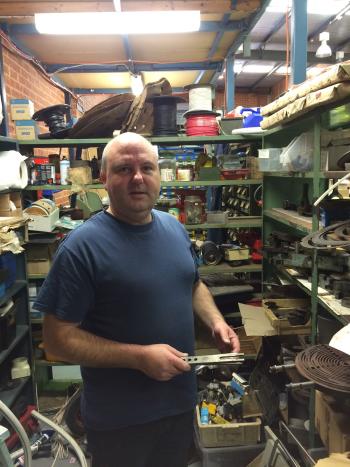
What have been the major changes in the vinyl business during the last 10 years?
Apart from Zenith’s two changes of ownership, the most recent arrangement came about because the previous owner (who is now a 50% co-owner, alongside me) became more involved with pressing operations in the UK, Europe and the US from 2009 onwards, and wanted to address the growing opportunity in Australia. At the time, many local orders for vinyl pressing were going offshore, and there weren’t the resources available with the under-utilised plant and equipment to respond to the market demand with the operation at its previous site.
Up until five years ago, the customers tended to be more from underground or alternative genres: punk, garage, hip hop, dance. There were more orders for 7” pressings (about three to one). Nowadays we’re pressing more 12” records (about 70%) and we’re running five or six days per week, with two shifts per day, as opposed to two or three days per week previously.
How does the quality of today’s vinyl pressings compare to last century?
One of the biggest changes has been the quality pressings required. In the 90s, with very few plants operating, artists just wanted to have their music on vinyl, and quite often the quality wasn’t where it’s at now. With more plants opening, existing plants increasing their capacity, and a new generation of customers seeking to press their music on vinyl, the demand for quality has also increased. An expectation of absolute noise floor free digital reproduction has become the norm, so plants have had to concentrate and invest in improving cutting and plating. I would argue that records produced today sound consistently better than they ever have. We’ve done a lot of re-issue pressings and many of the original pressings we’ve gotten our hands on for cutting references were quite poor. Yes, they were loud but distorted, and lacked the dynamics and fidelity that a cutting engineer will, in today’s environment, strive for and be expected to capture.
Is Zenith the only Australian vinyl pressing factory right now?
Yes, although there is talk of one other facility coming online in the next 12-18 months.
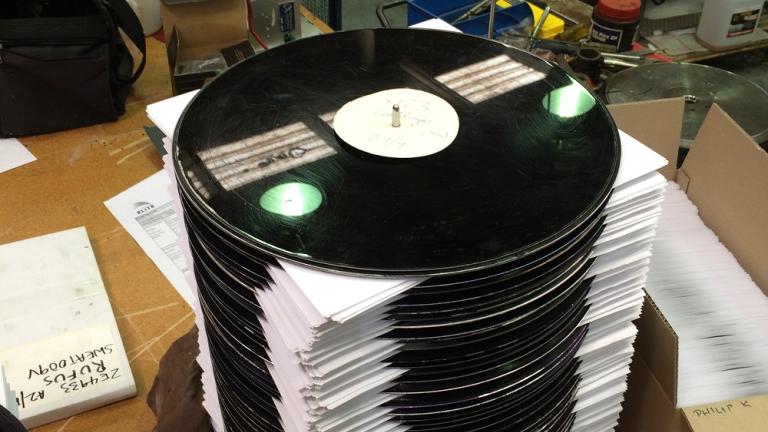
Newly pressed 12" vinyl records at Zenith Records.
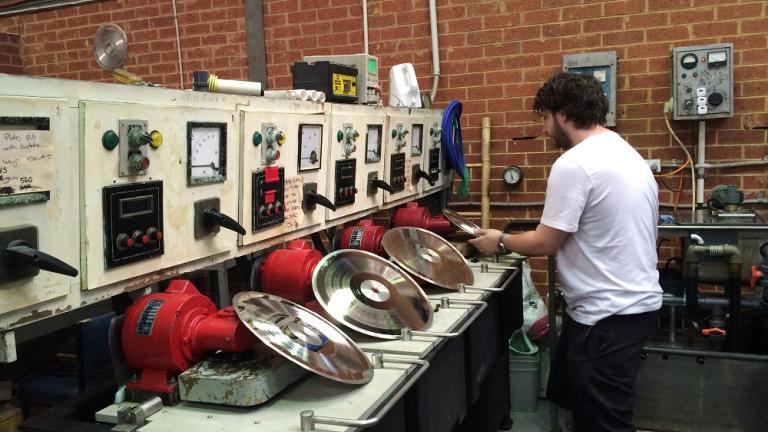
Checking the electro-plated mother plates at Zenith Records.
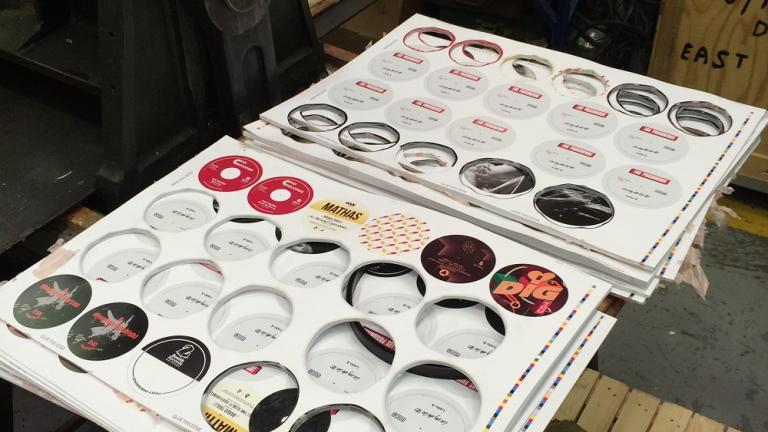
Sheets of labels ready to be cut at Zenith Records.
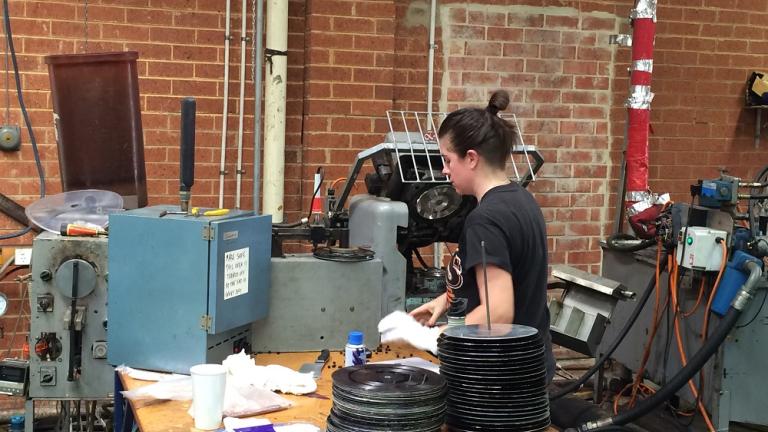
Pressing 12" vinyl records at Zenith Records.
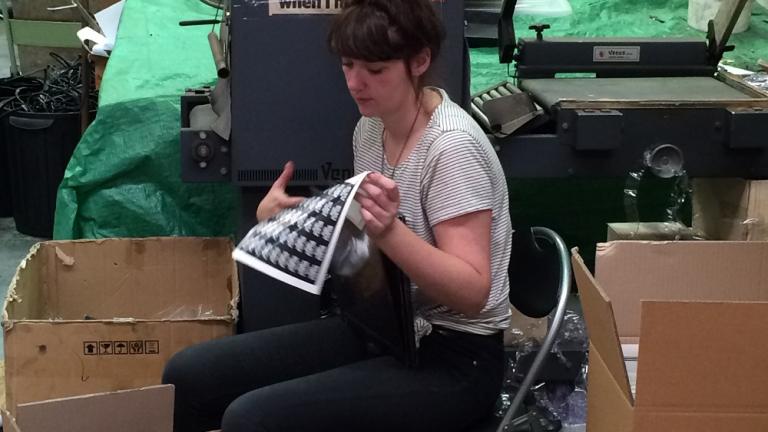
Putting stickers on records before shipping at Zenith Records.
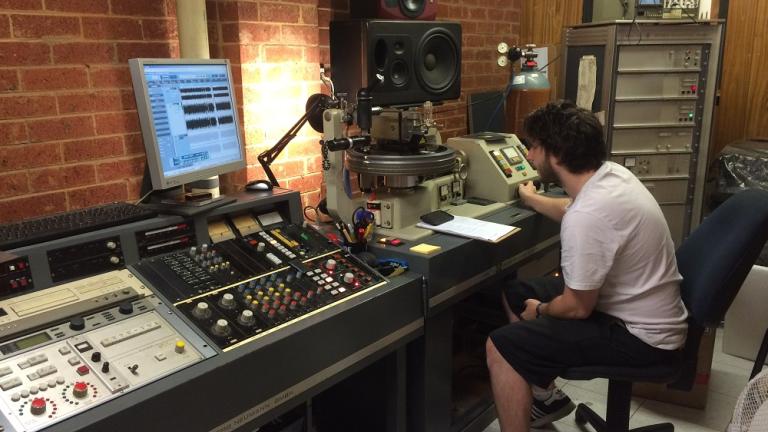
Preparing a vinyl master at Zenith Records.
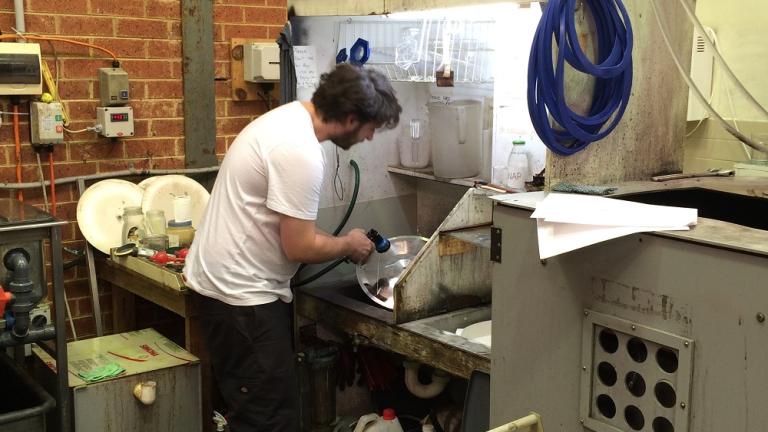
Checking the electro-plated mother plates at Zenith Records.
How would you describe the current market for vinyl?
Wide and varied! Larger runs are often snapped up by the under 25s at premium prices, many of whom don’t even have turntables. The vinyl record for many has become a ‘merchandise’ item, a must-have along with a t-shirt or a poster etc. The advent of digital downloads has meant that the purchase of the vinyl record has become a more valuable collectable physical item, whether it’s played or not. In addition to the vinyl, the digital files can also be downloaded and played on digital devices – about 60% of 12” records we do require a download card from a bulk host site.
What about vinyl sales?
While the official figures show vinyl sales increasing each year, the actual figures are difficult to determine because so much product these days is being sold independently through mail order, merchandise stands, independent distributors and labels. So the global output from the various plants shows a much larger volume of vinyl being produced than the music industry reporting suggests. There is no doubt that vinyl is enjoying a new-found popularity as a new generation of music buyers recognises the value of the object, the classic form or whatever other attributes are considered attractive.
What does the future hold for vinyl?
It’s only now that capital is being invested into a couple of companies who are in the final stages of building new pressing machines. The thing is nobody really knows how long this vinyl renaissance is going to last, given the anomaly that the vinyl renaissance represents with respect to technological progress. I mean, who’d have thought vinyl records would resume relevance in the twilight of the CD? So investment in capital equipment, or even to make machines, was and still is a risky proposition.
The NFSA celebrates vinyl the first Friday of every month. Don’t miss the free Vinyl Lounge!
The National Film and Sound Archive of Australia acknowledges Australia’s Aboriginal and Torres Strait Islander peoples as the Traditional Custodians of the land on which we work and live and gives respect to their Elders both past and present.

